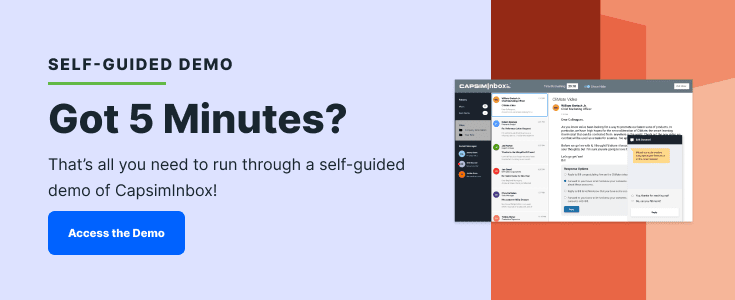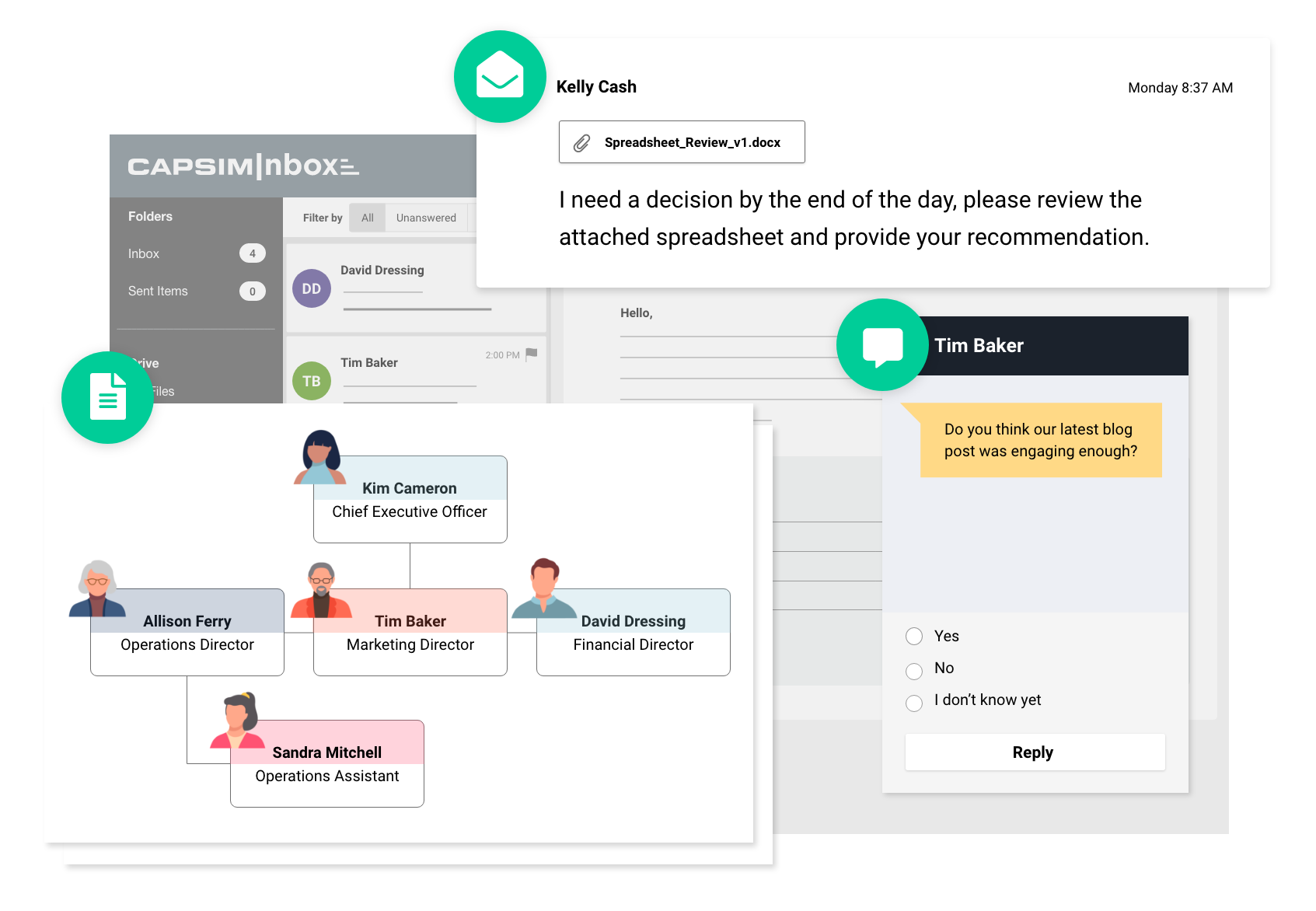ANSWERED: How to Effectively Measure Soft Skills
January 5, 2022
.jpg)
When we think of skill measurements, often we’re focusing on so-called “hard skills.” We’re curious about how well our employees are doing with the tasks and abilities listed on their resumes. But this is only one part of the skill set any excellent employee needs.
Let’s outline a scenario. You’ve just hired an employee with all the credentials you’re looking for. They can do the bulk of the tasks required of their position with their eyes closed.
In the interview, they seemed like a perfect fit, but once they get into the role, you notice that they are not working well with the team, they’re not communicating their needs appropriately, and their conflict resolution skills leave a lot to be desired.
Now, you’re in a tricky position: do you keep this employee on for the technical skills they bring to the table or let them go to invest in team-building efforts?
Wouldn’t it be better to avoid this scenario altogether? This post will show you how to measure soft skills effectively from the get-go, enabling you to make great hiring decisions for hard and soft skills.
How Do You Measure Soft Skills Effectively?
Before we get into the metrics piece of the puzzle here, let’s first make sure we’re on the same page about one thing: What are soft skills, and why are they important in the modern business environment?
Soft skills refer to abilities and strengths related to an employee’s relationship-building and interpersonal skills. Other examples of soft skills include flexibility, problem-solving, and communication skills.
A perfect-on-paper candidate can still fall flat if they don’t have the right soft skills. For example, if an employee lacks communication skills, they may cause conflicts with their colleagues or even hold up important projects by neglecting to report on their progress and performance.
RELATED READING: The 6 Vital Soft Skill Training Topics Your L&D Program Must Cover
Let’s take a closer look at the best methods for measuring soft skills for your workforce.
Assessments
The first step to using an assessment to measure soft skills is to fill out a questionnaire. This questionnaire will contain prompts such as “I take time to analyze a situation before responding” or “I am able to remain calm in stressful situations.”
The employee or candidate will then respond to these prompts by scaling their agreement with the statement from “strongly disagree” to “strongly agree,” or something similar.
Pros of Assessments
The main benefit of using assessments for measuring soft skills is that the results are incredibly measurable. By rating themselves on their agreements with the various statements in the assessment, the employee effectively assigns a numerical value (from 1-5, generally) to their competence in the soft skill associated with that particular prompt.
Another benefit of using assessments is that they are impartial and easy to apply consistently to multiple candidates or employees. It is also very efficient, as one L&D professional could feasibly manage the assessments for a large pool of employees.
Cons of Assessments
Soft skills assessments are not without their downsides. One disadvantage to using assessments to measure soft skills is that the testing environment is sterile. You assess your employees on their responses to certain situations when they are completely removed from those situations.
In other words, sitting in a quiet office filling out a questionnaire about how you handle high-stress situations is radically different from experiencing a conflict with a customer that you must resolve.
Another downside to assessments is that it can be very easy to “game the system.” Often, when reading an assessment, it is easy to tell which answer will result in a more favorable score. Candidates may select this answer even if it’s not true.
For example, if you’re trying to land a new job, are you likely to mark “strongly agree” on a question like, “I often lose my temper in stressful situations”? The candidate may fudge their answers to make themselves appear better on paper.
Finally, assessments can also create a gap in accurate self-assessment. We tend to overestimate our skills, but our skill sets have major gaps in reality. Assessments only provide the avenue for self-assessment but lack the function for a check on the self-assessment that’s so critical to identifying skill gaps and making employees aware of them.
Verdict
Should you use assessments to measure soft skills? Possibly. The best cases for soft skills assessments are cases where you are looking to test a sizable pool of candidates or employees very quickly.
Another good use case for assessments is a precursor to a performance review. Suppose an employee assesses themselves strongly on soft skills their manager has determined that they are weaker in. In that case, it can provide fodder for conversations about how their self-perception is incorrect and build self-awareness with the employee. This can help put them on a path to improving the skills in question.
Behavioral Interviews
Another method for measuring soft skills is to conduct behavioral interviews. In a behavioral interview, an interviewer will pose open-ended questions to a candidate or employee. These questions are designed to encourage the interviewee to share real-life stories regarding their responses to certain situations or stressors.
For example, if the interviewer is looking to assess the employee’s collaboration skills, they may say, “Tell me about a time when you had to work with someone you found difficult to work with. How did you handle your interactions with them?” Ideally, the interviewee’s answers to these questions will provide enough context to measure their soft skills accurately.
Pros of Behavioral Interviews
One advantage behavioral interviewing has over assessments is that it requires the employee to expound upon their answers. In an assessment, someone could indicate that they are completely comfortable riding the waves of a high-conflict situation without proving that fact.
In a behavioral interview, the candidate must share a story where they encountered the situation, give details about how they handled themselves, and answer follow-up questions. This makes it much more difficult for candidates to fudge their answers effectively.
Another benefit of behavioral interviewing is maintaining consistency across all interviews by standardizing the questions asked. With consent from the interviewee, you can even record their answers, allowing you or other professionals in your workplace to review them later.
Cons of Behavioral Interviews
The main downside of behavioral interviews is the vulnerability of this measurement method is subconscious bias. Where assessments assign a numerical value to the respondents’ answers to the various prompts, the results of a behavioral interview are up to the interviewer’s interpretation.
As unbiased as the interviewer may attempt to be, they may find themselves interpreting the candidate’s answers through the lens of some preconceived notion they have of the person sitting in front of them.
This complication only compounds when you add multiple interviewers to the mix. Different interviewers will interpret answers differently, making it difficult to standardize measurements. Additionally, this type of measurement is very time-consuming, as each interview must be conducted one-on-one with an interviewer.
Like assessments, behavioral interviews depend on the candidate’s self-assessment of their behavior in various situations for results. This can be a disadvantage, as the candidate may recall an event more favorably than it actually occurred or inflate their past performance to appear more capable.
Lastly, the stressful nature of an interview environment is not ideal for many people. Anxious or disabled candidates are at a greater risk of being disadvantaged in behavioral interviews.
Verdict
Should you use behavioral interviews to measure soft skills? In some cases, interviews may be a good fit for your needs. Soft skills like the ability to adapt or think on your feet are great candidates for behavioral interviewing. The interview itself is a situation in which the employee must call on those skills.
Simulations for Measuring Soft Skills
The last way to measure soft skills is to use a simulation. A simulation involves placing your candidate into a real-world situation and observing their behavior in that environment.
Using a simulation, you can replicate real-life challenges your candidate or employee may face on the job with your organization. Instead of asking them to self-assess how they would perform under various circumstances, you can observe how they respond to those circumstances in real-time.
Pros of Simulations
Chief among the pros of conducting soft skill training and measurement with simulations is the authenticity of the experience. Assessments can be overly sterile and interviews overly stressful and intimidating, but a simulation provides a real-world environment where the candidate can demonstrate their proficiency - or lack thereof - in different soft skills.
Another benefit to simulations is that the results are unbiased and measurable. Any L&D professional at your organization can observe the actions your candidate took in their simulation environment and view the results of those actions in the system. Regardless of who views that simulation, the results will be the same.
Simulations also allow for immediate feedback, allowing the candidate to self-assess and self-improve. The in-depth reporting available in simulations like those offered by CapsimInbox gives interviewers all the information they need to evaluate the candidate’s soft skills without bias.
Cons of Simulations
The main downside of simulations is that it can be expensive or time-consuming to produce simulations tailored to your specific work environment. Fortunately, platforms like CapsimInbox offer a vast library of out-of-the-box simulations to choose from, costing just $10/user, which can save you time and money. Still, these simulations may not accurately reflect your specific use case, which can be a challenge.
Verdict
Should you use simulations to measure soft skills in your organization? If you are looking to measure soft skills effectively and without bias, simulations are the way to go. The use of those simulations can offset the upfront investment in developing simulations for your organization.
With CapsimInbox, you can go beyond just measuring your employees’ soft skills and begin taking steps to develop soft skills in the workplace. Our soft skills training programs are validated and proven to improve employees' soft skills across industries consistently.
Effectively Measuring Soft Skills with Simulations
Though notoriously difficult to measure, soft skills are imperative to the success of individuals and your organization as a whole. By examining these three different measurement methods, it’s clear that simulations provide the most unbiased and holistic view of an employee’s soft skills. The authentic nature of simulations gives them an edge over interviews and assessments in analyzing an individual’s true skill level.
CapsimInbox is a simulation tool that provides incredible soft skill training and analysis. Our tool offers a validated, proven solution for assessing and improving soft skills.
Curious to see how it works? Get started today with a self-guided demo and see for yourself how CapsimInbox can change your soft skills development for the better.





.png?width=80&name=1-questions%20(1).png)